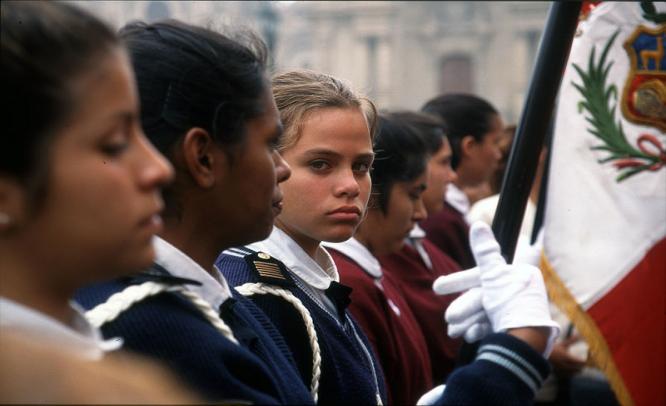The World Bank and the Government of Peru sign an agreement to strengthen a basic education project.The project will enable education to be evaluated properly throughout the country.
29th july
In school 40374 Elias Caceres Lozada, in rural Arequipa, 470 miles south of Lima, classrooms are full to capacity –a proud achievement for this rural school where 95% of children attend classes almost every day.
But their presence in a classroom is no guarantee kids are getting the education they need for their future development. Their parents don’t know either, and have no way to measure how well teachers are doing.
It’s not a matter of quantity but of quality, say many students. “The government has to invest more in education, has to do more studies about the quality of our schools,” says Dante, a young Peruvian who made it to college.
To give all children the best chance in life, Peru is focusing on schooling, particularly at an early level. That’s the main idea of a basic education project President Ollanta Humala and World Bank Group President, Jim Yong Kim, formalized in Lima.
“Today, I think science and technology, training, and the intelligence and innovative capabilities of young Peruvians are our best bet. We have to give them opportunities,” said Humala at the signing ceremony.
The agreement will help implement an educational strategy benefiting six million students in 40,000 schools throughout the country.
It is in sync with Kim’s notion that quality education is every child’s right.
“The document we just signed is emblematic and seeks to provide opportunities for all,” added Kim.
More skills to students
Indeed education opportunities need improving in Peru. The country ranked near the bottom of 65 countries in math, reading comprehension and science following a recent evaluation, by the Programme for International Student Assessment (PISA – 2009), which tested a national sample of 15-year-old students.
In 2011, the study “Strengthening skills and employability in Peru” determined that in addition to professional training, students also required other types of skills to successfully enter the Peruvian labor market. These include socio-cultural ones, which are highly valued by employers.
Today, I think science and technology, training, and the intelligence and innovative capabilities of young Peruvians are our best bet. We have to give them opportunities.
Ollanta Humala
President of Peru
These skills are developed early on in life and through basic education –typically in the 12 years of pre-school, primary and secondary schooling.
“What you learn at school is useful throughout your life. Your skills and behaviors as an adult are not only greatly influenced by reading, but also by the laughter, frustrations and achievements you experience as a child,” says Gabriela Chumpitaz, Director of thePinoteca Project, which received an award from the World Bank in 2009 for its educational activities created for children living in Cerro el Pino, a poor neighborhood in La Victoria District of Lima.
While pre-school enrolment has increased since 2008 (from 73% to 78%), other associated factors, such as nutrition or access to health, can affect child development. However, access to quality basic education is a key factor for achieving Peru’s further development.
Supporting early education
In Peru, developing human capital is crucial for achieving sustained economic growth. A recent project supports this: the Strategic Learning Achievements Program will monitor and evaluate the reforms implemented to improve the quality of education and learning in the country.
Students’ progress will be measured through ongoing evaluations, which will focus on identifying the impact of the programs which have been implemented. These evaluations will also help determine which schools require more support and efficiently allocate resources to them. What’s more, the program will contribute to closing the major education gaps, which still exist in the country today.
Finally, the program will also monitor teaching methods within the classroom and implement a system for the selection and training of school principals.
All of these activities will enable students to develop the different types of skills, both cognitive and socio-emotional, that are crucial for their future success in the labor market.
Source:World Bank
– See more at: http://www.internationalfinancemagazine.com/article/A-lesson-from-Peru-quality-trumps-quantity-in-countrys-classrooms.html#sthash.XWF17QZQ.dpuf

